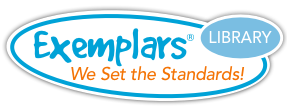Grade 2 - Geometry Unit
The Geometry Unit involves analyzing attributes of two- dimensional shapes and three-dimensional solids in order to answer questions such as:
- How can you create a shape with six sides and six vertices? What is the geometric name of this shape?
- How are these shapes alike? How are they different? How can you prove they are all polygons?
- Why is a circle NOT a polygon or a face?
- Why is a cylinder NOT a polyhedron?
- How can you prove that a square is a special rectangle?
- How can you prove that a cube is a special rectangular prism?
Math Concepts and Skills:
The student analyzes characteristics of two-dimensional shapes to develop generalizations about their properties.
The student:
- creates two-dimensional shapes with given attributes, such as number of sides and vertices.
- classifies and sorts polygons based on their attributes using formal geometric terminology such as vertex/vertices and sides.
- classifies and sorts three-dimensional solids based on their attributes using formal geometric language such as vertex, edge, and face.
Summative Assessment Task
Students determine how many sticks and pebbles are used to make five triangles.
Instructional Tasks/Formative Assessments
Students determine how many paper clips and cubes are needed to create four squares.
Students determine the number of craft sticks needed to make a number of triangles and squares.
Students create a design using pattern blocks, where the number of sides on the pattern blocks adds up to 29.
Students determine who used the most pasta and gumdrops to make quadrilaterals, pentagons and hexagons.
